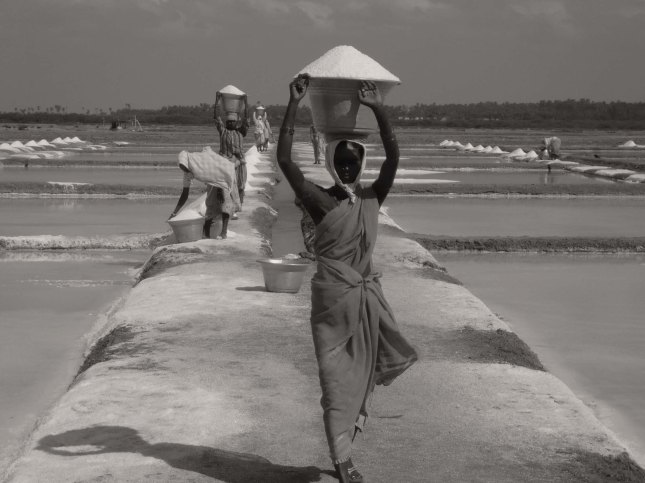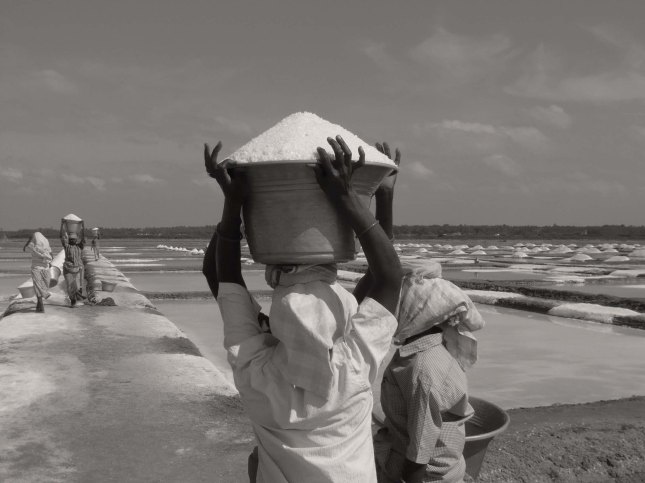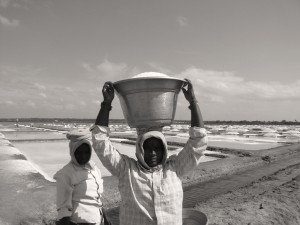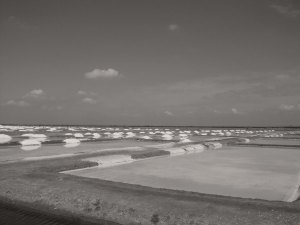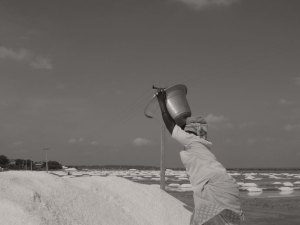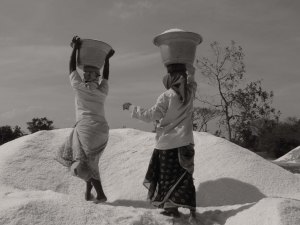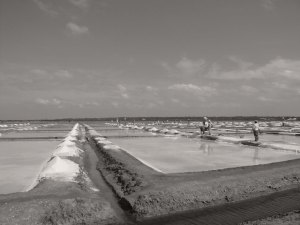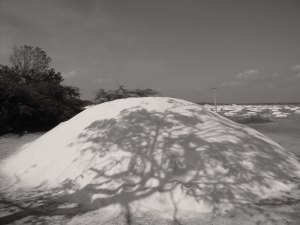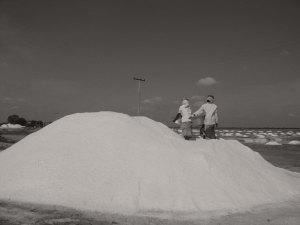Salt, also known as sea salt, is a crystalline mineral that is composed primarily of sodium chloride ( NaCl ); a chemical compound, belonging to the larger class of ionic salts. Salt is one of the oldest, most universally, prevalent food seasonings and salting is a necessary method of food preservation. The taste of salt ( saltiness ), is one of the basic human tastes. While people have used canning and artificial refrigeration, to preserve food for the last hundred years or so, salt has been the best-known food preservative, especially for meat, for many thousands of years. A very ancient saltworks operation has been discovered at the Poiana Slatinei archaeological site, next to a salt spring in Lunca, Neam County, Romania. Evidence indicates that Neolithic people of the Precucuteni Culture were boiling the salt-laden spring water through the process of briquetage, to extract the salt as far back as 6050 BC. The harvest of salt from the
surface of Xiechi Lake, near Yuncheng in Shanxi, China, dates back to at least 6000 BC, making it one of the oldest verifiable saltworks. Salt was included among funeral offerings, found in ancient Egyptian tombs, from the third millennium, BC as… were salted birds and salt fish. From about 2800 BC, the Egyptians began exporting salt fish to the Phoenicians, in return for Lebanon cedar glass and the dye Tyrian purple. The Phoenicians traded Egyptian salt fish and salt from North Africa throughout their Mediterranean trade empire. In India, the symbolic act of salt has a different significance due to the ‘salt sathyagraha’. The Salt Satyagraha started on March 12, 1930, with the undertaking of the Dandi Yatra, by Gandhiji and 78 of his followers.
The triggering factor for this movement was the British monopoly of salt trade in India and the imposition of a salt tax. As a result of the contemporary British laws, the sale or production of salt by anyone but the British government was a criminal offense. So, while Salt was readily and freely accessible to laborers in the coastal areas, they were forced to pay money for it. Since Salt is needed by all, irrespective of geography… class/caste, religious beliefs and ethnic backgrounds, Mahatma Gandhi chose it as the focal point for the Satyagraha.
I had taken these images along the East Coast Road, also known as State Highway 49, a two lane highway in Tamil Nadu, India, built along the coast of the Bay of Bengal connecting Tamil Nadu’s State capital city Chennai with Cuddalore via Pondicherry. The salt, although an essential ingredient of one’s life, the farmers who produce salt are often exploited. They lead a tough life toiling in the hot sun. These photo sketches were taken during my road trip along the ECR stretch using lo-fi cameras.
Ekalokam collective, a firm set-up to merchandise art in every day life has published a photo-notebook titled ‘Southern Salt
Abul Kalam Azad
29th October 2014
(C) All rights reserved. All the images published in this blog is copyrighted property of contemporary Indian photographer Abul Kalam Azad. Text transcribed by TSL Nadar. Reprinting / publishing rights reserved by the author and prior permission is required for reproduction / re-publishing, For more information call {0}4175 237405 / {0}94879 56405 or mail to ekalokam@gmail.com / FACEBOOK – Abul Kalam Azad
